- Home
- About Us
- Products
-
Heat-Pump Dehumidifier DeAir
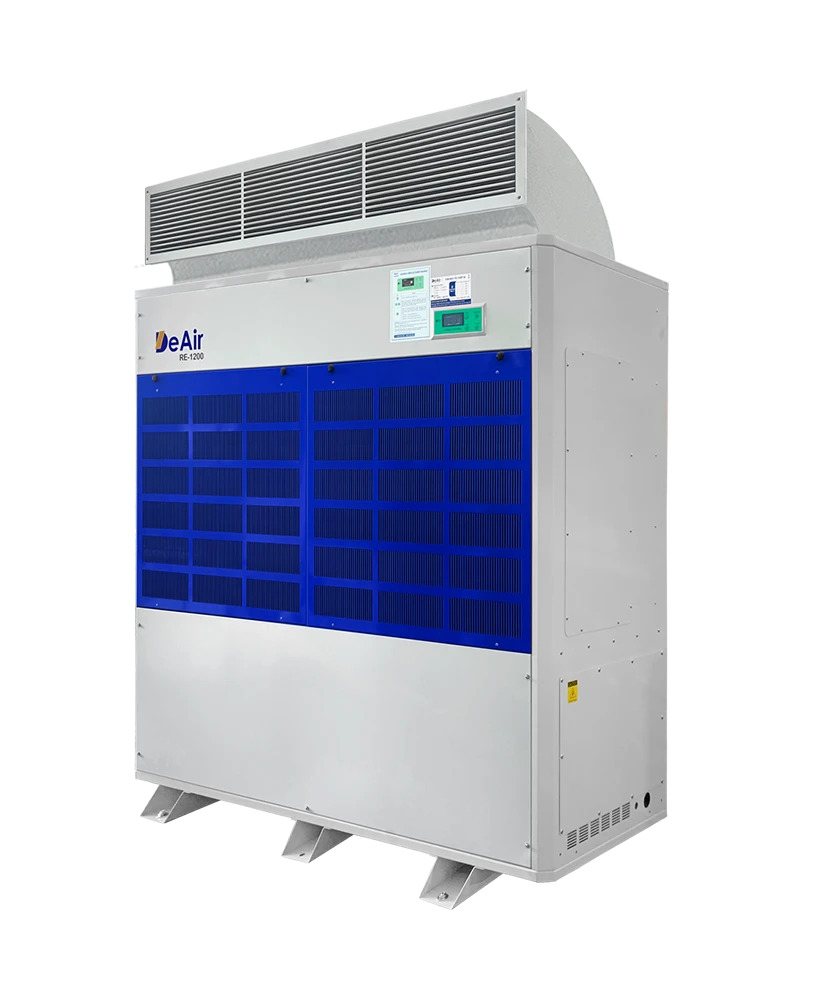 DeAir.RE
DeAir.RE -
Heat-Pump Dryer DeAir.RE-H
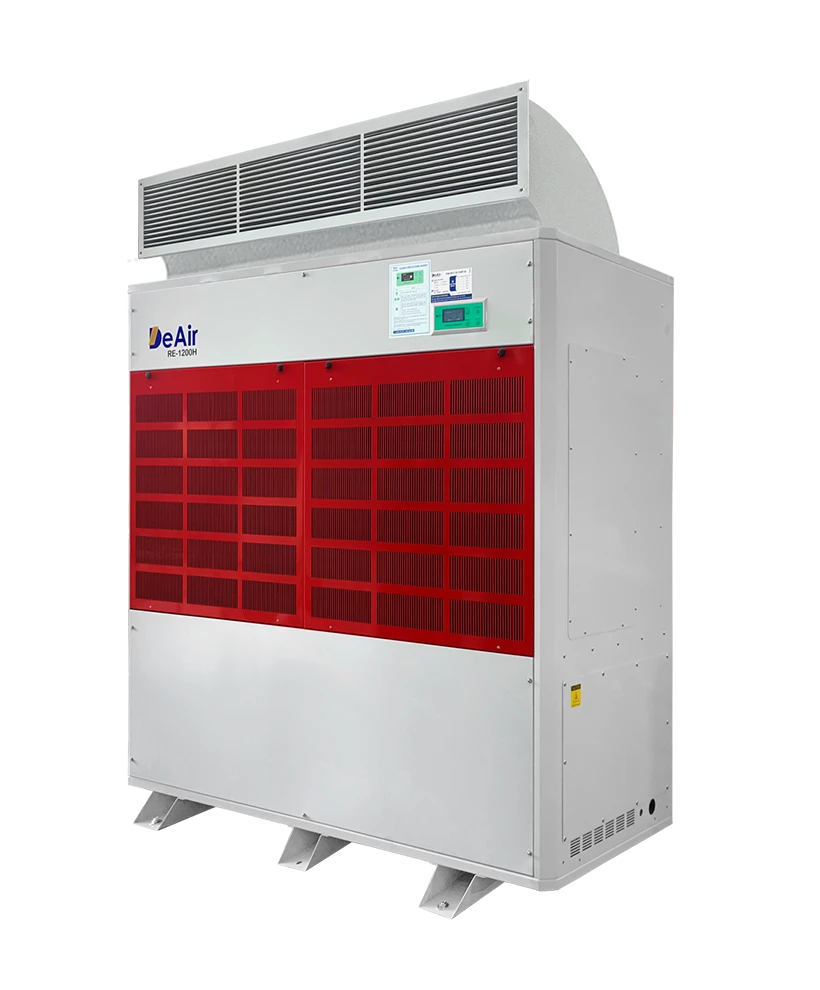 DeAir.RE-H
DeAir.RE-H -
Heat-Pump Stainless Steel Dehumidifier
 DeAir.RE-INOX
DeAir.RE-INOX -
Heat-Pump Isothermal Dehumidifier DeAir.CRE
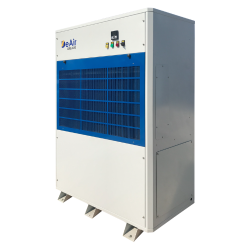 DeAir.CRE
DeAir.CRE -
Dezenno Dehumidifier
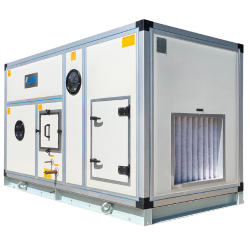 Dezenno
Dezenno -
Heat-Pump Ceiling Mounted Dehumidifier DeAir
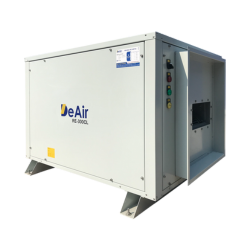 DeAir.RE-CL
DeAir.RE-CL -
Dehumidifier Olmas
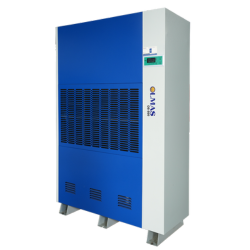 Olmas-OS
Olmas-OS -
Industrial Humidifier DeAir
 DeAir.HM
DeAir.HM -
Heat-Pump Dryer Daxwell
 Daxwell
Daxwell -
Electric Duct Heater DeAir
 DeAir.Heat
DeAir.Heat -
Air Handling Unit Dezenno.MAX
 AHU
AHU
-
- Services
- Projects
- Warranty – Maintenance
- News
- Contact
DeAir Dehumidifiers & Humidifiers: Comprehensive Humidity Control for Valuable Document Preservation
11/06/2025
Welcome to this in-depth article on humidity control solutions for document preservation. In the modern world, documents, whether hard copies or electronic, continue to play an extremely important role in all fields, from history and law to business and personal life. However, they constantly face a hidden but extremely dangerous threat: humidity.

Both excessively high and excessively low humidity can cause irreparable damage, from mold and deterioration to brittleness and cracking. To thoroughly address this issue, applying a comprehensive humidity control solution, including both dehumidification and humidification, is essential. With many years of experience and deep expertise in climate control in Vietnam, DeAir is proud to offer optimal solutions, effectively and sustainably protecting your valuable document assets.
Table of Contents
- I. The Importance of Humidity Control in Document Preservation
- II. Comprehensive Humidity Control Solutions from DeAir for Document Preservation
- III. Outstanding Benefits of Using DeAir's Comprehensive Humidity Control Solutions
- IV. Experience in Choosing a Humidity Control System for Document Preservation
- Conclusion
I. The Importance of Humidity Control in Document Preservation
Environmental humidity is a key factor directly affecting the lifespan and quality of documents. Failure to control humidity scientifically can lead to serious consequences.

1.1. Harms of High Humidity to Documents
High humidity is an ideal environment for the growth of harmful organisms and negative chemical reactions:
- Mold, termites, insects: These are the number one enemies of paper documents. Humidity above 60% RH creates conditions for mold and bacteria to proliferate, causing stains, deteriorating paper, destroying fiber structure, making documents irrecoverable. Termites and insects also prefer humid environments, where they will gnaw and destroy documents.
- Physical structural damage: Paper can warp, blister, ink can bleed, pages can stick together or bookbinding glue can detach. This detracts from the aesthetic and functional value of the documents.
- Loss of value: Documents damaged by mold or humidity can lose their historical, legal, or economic value, causing significant losses for individuals and organizations.
1.2. Harms of Low Humidity to Documents
Although less commonly discussed, excessively low humidity also poses significant risks:
- Paper becomes brittle and easily torn: When the environment is too dry, paper loses its natural moisture, becoming stiff and very prone to tearing or breaking during handling or movement.
- Binding glue and materials become stiff and brittle: For books and files, the glue can become brittle and crack, leading to pages detaching from the spine, destroying the document's structure.
- Increased risk of static electricity: A dry environment increases the likelihood of static electricity buildup, which is particularly dangerous for electronic documents or in storage rooms with many paper files, potentially causing short circuits or fires.
1.3. Ideal Environment for Documents
To best preserve documents, a stable environment for both temperature and humidity must be maintained. Most experts and archival organizations recommend:
- Relative Humidity (RH): Ideally 40% to 55% RH.
- Temperature: Maintain between 18°C and 25°C.
According to the National Center for Preservation Technology and Training (NCPTT) of the United States, environmental stability is a paramount factor in preserving cultural artifacts, including documents. Large fluctuations in temperature and humidity can be more damaging than maintaining a slightly imperfect but stable humidity/temperature level. Source: National Center for Preservation Technology and Training (NCPTT).

1.4. Types of Documents and Humidity Requirements for Preservation
Depending on the type of document, humidity requirements may vary:
- General paper documents (office papers, administrative records): Medium sensitivity. Require humidity around 45% - 55% RH. Avoid excessively high humidity causing mold or excessively low humidity causing brittleness. Recommended temperature around 20°C - 25°C.
- Archival documents, historical documents, rare books: Very high sensitivity. Humidity requirements are often stricter, maintained between 40% - 50% RH. Recommended temperature around 18°C - 22°C. According to the Association of Moving Image Archivists (AMIA), environmental control is a key factor in extending the lifespan of archival materials. Source: AMIA.
- Films (negatives, positives), magnetic tapes, audiovisual documents: Very high sensitivity, especially films. Humidity requirements are often lower, around 30% - 40% RH to prevent mold, sticking, and fading. Low temperature, around 15°C - 20°C or lower for long-term preservation.
- Electronic documents and storage devices (hard drives, USBs, CDs/DVDs): High sensitivity. High humidity can cause short circuits, corrosion of components; low humidity can cause static electricity buildup. Humidity around 40% - 60% RH is ideal for office environments and electronic storage rooms. Recommended temperature 20°C - 25°C.
II. Comprehensive Humidity Control Solutions from DeAir for Document Preservation
DeAir offers a wide range of products, meeting all humidity control needs, from dehumidification to humidification, ensuring an ideal environment for all types of documents.

2.1. Dehumidifiers: Optimal solution for high humidity
Dehumidifiers are essential devices to remove excess moisture from the air, preventing damage caused by high humidity.
- Working principle of dehumidifiers (summary): Most DeAir dehumidifiers operate based on the condensation (Heat-Pump) or adsorption (Rotor) principle. Specifically, a centrifugal fan draws humid air into the machine, through the evaporator coil, where moisture condenses into water and is drained. Then, the dry air is slightly reheated (for Heat-Pump) or processed through an adsorption rotor to thoroughly remove moisture before being discharged.
- Suitable DeAir dehumidifier lines:
- Olmas Household Dehumidifiers: Suitable for small spaces such as personal offices, document cabinets, home libraries. Typical models: Olmas OS-12, OS-25, OS-55.
- To learn more about Olmas models, you can refer to: Olmas Household Dehumidifier: Good Price, Genuine, For Every Home and specific models such as: Olmas OS-12, Olmas OS-25, Olmas OS-55.
-
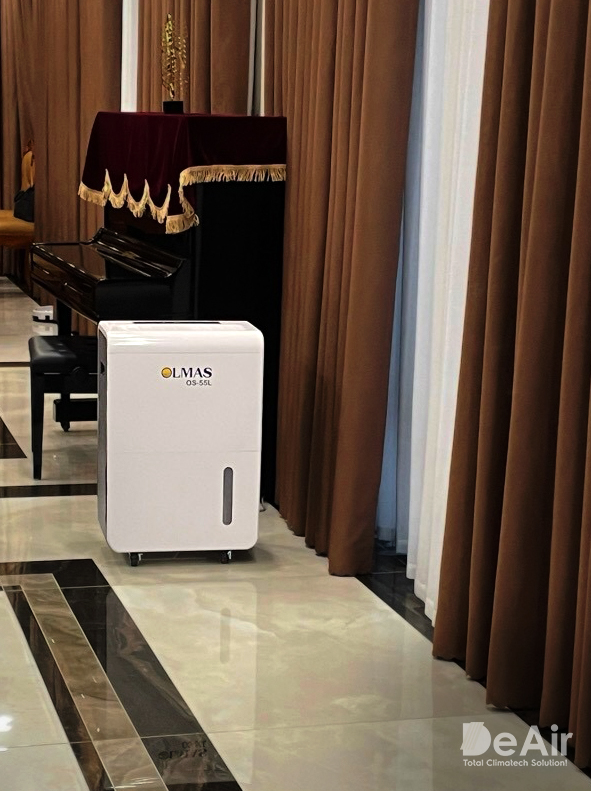
Olmas OS-55 Dehumidifier is often used for residential needs, suitable for small libraries, reading rooms, offices with archived documents - DeAir.RE, DeAir.CRE, Olmas Industrial Dehumidifiers: For large archives, museums, official records, bank vaults, paper mills. Advantages: large capacity, high durability (with INOX casing option for harsh environments), stable operation in demanding conditions. Typical models: DeAir.RE-60, DeAir.RE-300, DeAir.RE-1200, and INOX casing lines like DeAir.RE-150H INOX.
- See more information at: Industrial Dehumidifiers: Comprehensive Humidity Control Solutions for Businesses and Dehumidifiers for Bank Vaults: The Ultimate Solution for Asset Protection. Specific models: Heat-Pump Dehumidifier DeAir, Heat-Pump Isothermal Dehumidifier DeAir.CRE, Dehumidifier Olmas, and specific models such as: DeAir.RE-60, DeAir.RE-300, DeAir.RE-1200, Heat-Pump Stainless Steel Dehumidifier DeAir.RE-INOX.
- Dezenno Rotor Dehumidifiers: Optimal solution for extremely sensitive documents requiring very low humidity (below 40% RH), with precise control. Typical models: Dezenno 320CMH-1200CMH, Dezenno 1500CMH - 18000CMH.
- Learn more details at: Dezenno Dehumidifier and specific models such as: Dezenno 320CMH-1200CMH, Dezenno 1500CMH - 18000CMH.
- DeAir.RE-CL & DeAir.CRE-CL Ceiling Mounted Dehumidifiers: Special design saves floor space, distributes dry air evenly, suitable for spaces with high aesthetic requirements or limited floor area. Typical models: DeAir.RE-60CL, DeAir.RE-300CL, DeAir.RE-600CL.
- Refer to: Ceiling Mounted Dehumidifier DeAir and specific models such as: DeAir.RE-60CL, DeAir.RE-300CL, DeAir.RE-600CL.
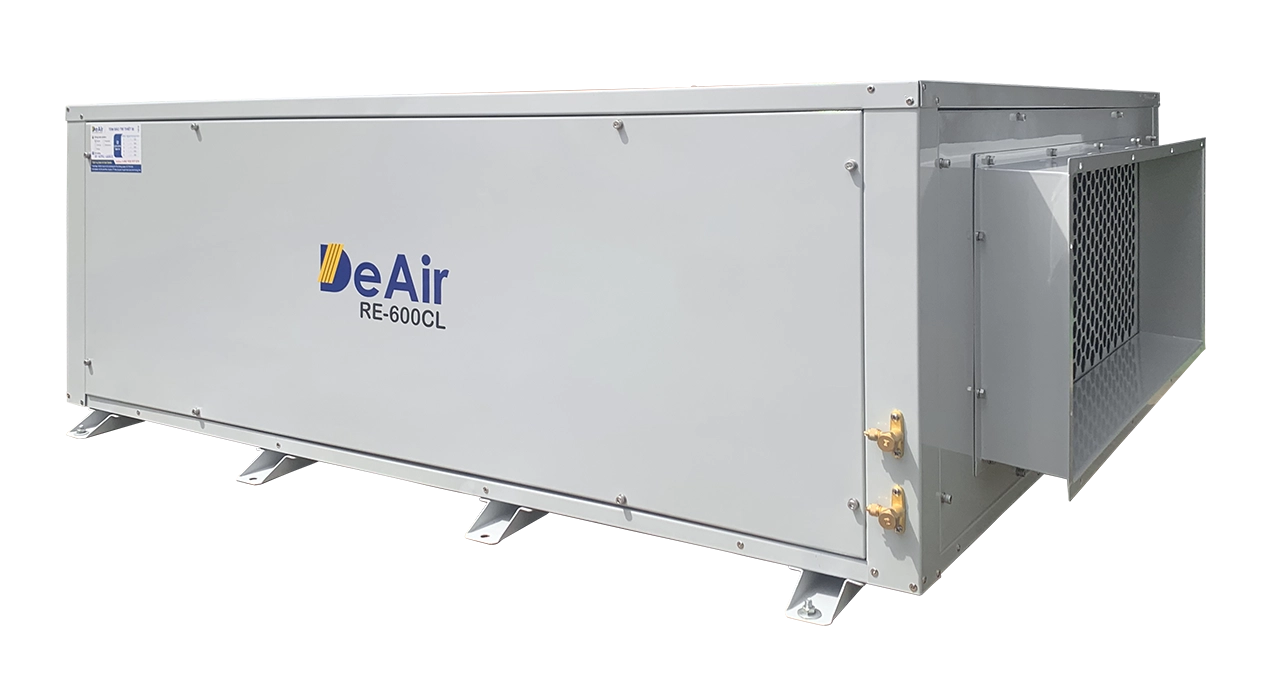
2.2. Humidifiers: Solution for low humidity
To address excessively low humidity, especially during dry seasons or in tightly temperature-controlled environments, humidifiers become an indispensable part of a comprehensive humidity control system.
- When is a humidifier needed? When the document storage environment is too dry, humidity drops below permissible levels (e.g., below 40% RH for general paper documents or below 30% RH for certain film types), causing brittleness, cracking, and reducing document lifespan.
- Working principle of DeAir.HM Humidifiers: DeAir.HM electrode humidifiers use electrode technology to boil water and produce pure steam. A microprocessor controller ensures precise humidity control.
- Advantages of DeAir.HM Humidifiers:
- Fast and even humidification, maintaining ideal humidity.
- Durable design, easy to maintain, with a large drain pump for easy scale removal and extended electrode lifespan.
- Suitable for spaces requiring high or stable humidity, such as libraries, exhibition rooms, special document archives.
- To learn more details about humidifiers, please visit: Industrial Humidifier DeAir and typical models such as: DeAir.HM-6S, DeAir.HM-30S, DeAir.HM-130S.
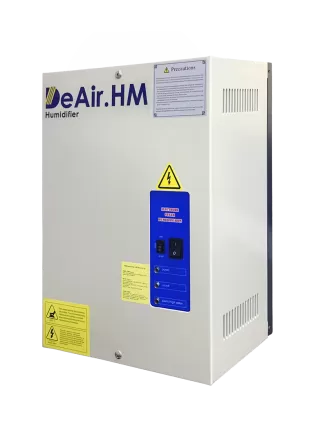
III. Outstanding Benefits of Using DeAir's Comprehensive Humidity Control Solutions for Document Preservation
Investing in DeAir's humidity control system brings many strategic benefits for document preservation:
- Comprehensive document protection: The DeAir system prevents not only mold, insects, and physical damage from high humidity but also brittleness and cracking from excessive dryness, ensuring documents are protected in all conditions.
- Extended document lifespan: Maintaining stable humidity helps documents retain their quality, color, and durability over time, preserving their historical and legal value.
- Precise and stable humidity control: With advanced Heat-Pump and Rotor technology for dehumidifiers, along with the electrode technology of DeAir.HM humidifiers, the system ensures precise maintenance of desired humidity, protecting documents from sudden environmental fluctuations.
- Energy-efficient solutions: Especially with Heat-Pump technology, DeAir's solutions help optimize operating costs for both dehumidification and drying, bringing high economic efficiency.
- Enhanced management efficiency: Minimizes effort and costs for restoring or reproducing damaged documents, making the document management process more efficient.
- Professional services from DeAir: DeAir's team of experienced and dedicated technicians is committed to providing comprehensive and optimal solutions, tailored to customers' specific needs, from consultation and design to installation, warranty, and maintenance. We are proud to be ISO 9001:2015 certified, demonstrating our commitment to product quality and professional production processes.
- You can learn more about our technical services at: DeAir Technical Services: Professional, Comprehensive & ISO 9001:2015 Certified.

IV. Experience in Choosing a Humidity Control System for Document Preservation
To choose the most suitable humidity control system for document preservation needs, you need to carefully consider the following factors:
- Assess space and needs:
- Determine the area and volume of the space to be treated.
- Document type and humidity sensitivity (refer to section 1.4 to determine specific humidity requirements: for example, historical documents need lower and more stable humidity than general paper documents).
- Measure the current environmental humidity to determine whether dehumidification or humidification is needed.
- Establish desired humidity targets and ideal temperature for preservation.
- Consider technical factors:
- The dehumidification/humidification capacity of the equipment must match the space size and actual humidity conditions.
- Evaluate airflow, noise level (important for working environments or libraries), power source, and additional features such as air filters (e.g., AHU Dezenno.MAX with G4, F8 filters), smart control via HMI or PLC.
- For special requirements (e.g., large archives, laboratories, museums), consider industrial or rotor models to ensure high efficiency and precision.
- Consult DeAir experts: DeAir is committed to providing comprehensive and optimal solutions, tailored to customers' specific needs. Do not hesitate to contact DeAir directly for in-depth consultation, on-site surveys (if necessary), and detailed quotes.
Conclusion
Humidity control is a key factor in protecting valuable documents from environmental damage, whether it's mold from high humidity or brittleness from low humidity. With advanced, efficient, and energy-saving dehumidifier and humidifier solutions, along with professional ISO 9001:2015 certified services and attentive after-sales care, DeAir is a trusted partner, bringing absolute peace of mind to customers in document preservation. Let DeAir accompany you in creating an ideal environment, helping your intellectual assets remain intact over time.
Contact DeAir today for in-depth consultation and a comprehensive humidity control solution for your documents!
Sign up for news from DeAir
Related news






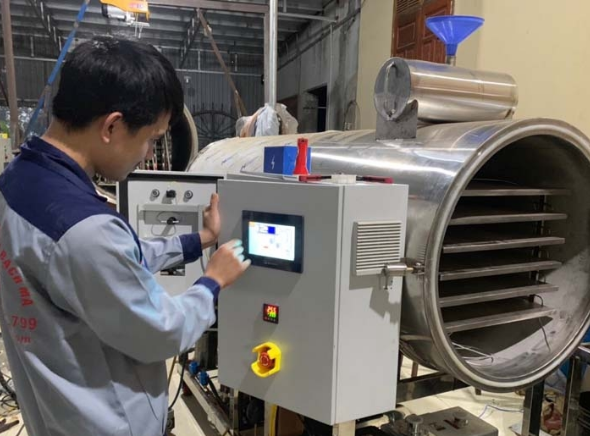



![[Case Study] DeAir Installs DeAir.De Rotor Humidity Control System for Pharmaceutical Plant in Binh Duong [Case Study] DeAir Installs DeAir.De Rotor Humidity Control System for Pharmaceutical Plant in Binh Duong](https://deair.com.vn/thumbs/news/2023_04/ban_giao_may_cho_duoc_bd/[270x153-cr]image1-1024x772.jpg__cv.webp)

![[Review & Guide] Olmas OS-300: The New Humidity Control "Warrior" for Medium to Large Warehouses [Review & Guide] Olmas OS-300: The New Humidity Control "Warrior" for Medium to Large Warehouses](https://deair.com.vn/thumbs/news/huong_dan_su_dung_may_olmas_21/[270x153-cr]vtm06440.png)